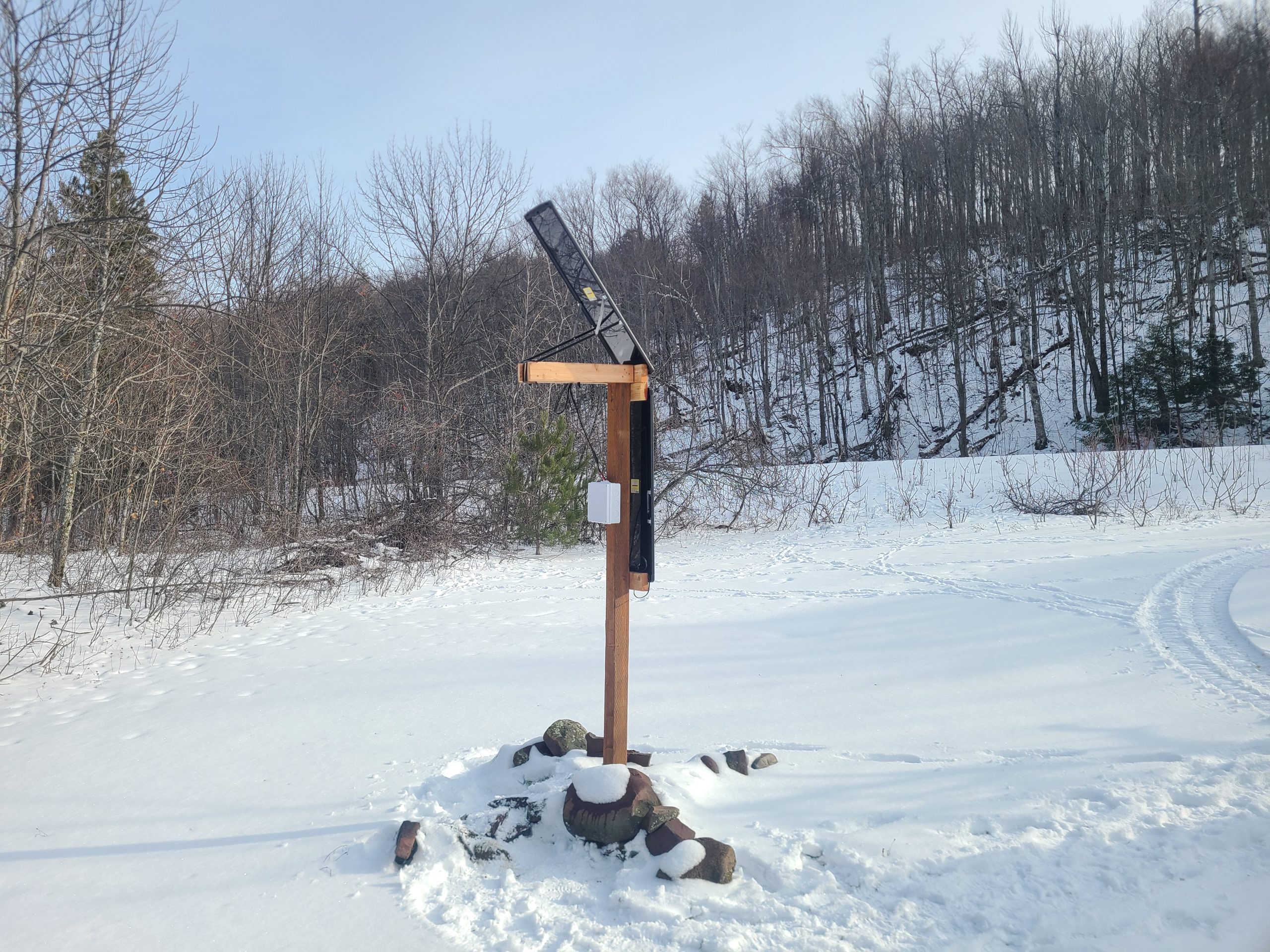9/22 Weekly Update
- The team meeting hosted on 9/18 was focused on managing meeting times and following up on correspondence with our DNR contacts. The project specs were updated with realistically weighted percentages and the team discussed the possibilities and advantages of installing a weather station at the project site.
- The team visited the project site on 9/21 without Shane and our DNR contact. This made accessing the mine impossible and led to a good amount of speculation about specific project specifications. We were able to survey the surrounding landscape and choose three locations for solar testing and one location for wind testing. A greater array of solar and wind data collection devices will be brought to the next visit to the site. A loose idea for a cooling system was developed during the visit and the return trip. Most progression on the project will be decided by communication with our contacts and other on-campus teams.
- Moving forward, I will be researching options for data collection from our DAQ being developed by Alex. I will also be parting together multiple theoretical solar test systems that span a range of budgets. Decisions need to be made regarding the weather station and there is a meeting scheduled with Shane.
10/22 Weekly Update
- The team received a budget and went to work on ordering components for testing equipment. With the budget in mind, I researched solar panels that fit our off-grid requirements. I also began looking into efficient and user-friendly PV module testing methods.
- More information was received about a previous power delivery system that was set up at the mine site. With this information in mind, the first steps to ordering panels were taken on 10/6.
- I also began researching cable and inverter options for the complete solar system.
Winter Break Update
- Two solar testing arrays were installed at the site and the power DAC to collect data neared completion.
- The environmental DAC schematic was finalized and work began.
1/27 Update
- My main focus for the week was researching programming an STM32 microcontroller. This is an essential component of the environmental DAC and finding a streamlined way of flashing firmware is critical for workflow and future project repeatability. The STM32CubeProgrammer software is simple to use and the plan for next week is to simplify the hardware needed for programming.
2/3 Update
- This week was focused on constructing the power DACs that will be deployed at the test sites on 2/14/2024. I assisted Alex briefly with soldering while he did the bulk of the manual labor.
- I ordered an STM32 programmer to speed up the process of flashing the microcontroller. This will help greatly next week when the construction of the Environmental DAC begins.
- Next week I will program the first of the microcontrollers and research the easiest way to program for future reference.
- I am concerned that even with the programmer the process will not be easy.
2/9 Update
- Winter Carnival!
- Briefly looked into the STM32CubeProgrammer software.
2/16 Update
- The second Power DAC was completed on 2/13 and was deployed at the mine on 2/14.

- Both test sites were in perfect shape and the DACs installed easily.
- The first steps in connecting the microcontroller to the programmer were made on 2/16. Connecting via UART is the initial idea but the documentation on the process is thin.
2/23 Update
- The week before spring break was full of exams so very little progress was made on programming.
3/1 Update
- Spring Break!
3/8 Update
- The microcontroller has been programmed!
- The complexity of the UART connection was not required. STM32 primarily uses a four-pin SWD interface for programming that I initially didn’t think could be accessed on our chip. With 3.3v power provided through the power filtering circuit, I connected VDD, VSS, dio, and clk to the programmer and got a stable connection.
- Work began on the firmware. It needs to send ADC value data over CAN to a Raspberry Pi. I will be working in the STM32CubeIDE in C. The IDE recognizes our hardware and outlines code for the physical components automatically.
- I don’t have experience with Pi and I am worried that programming on the Zero may be harder than expected. It is crucial in testing the CAN transmissions.
3/15 Update
